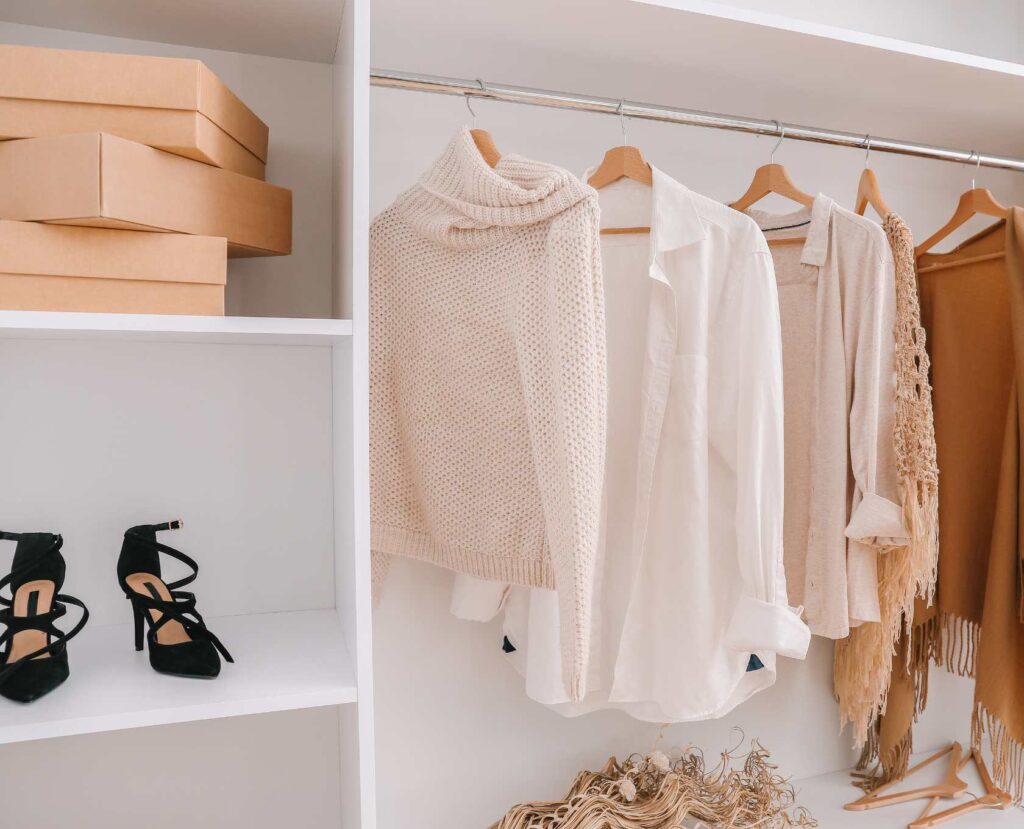Disclaimer: This post may contain affiliate links. This means that if you click on the link and purchase an item, I'll make a small commission to keep the lights running. Furthermore, as an Amazon Associate I earn from qualifying purchases. I recommend only products I have personally tried and believe can bring value to you.
Picture this. You’re feeling inspired. Just about to whip up a killer chilli-crisp-hot-honey egg toast you’ve been seeing on Instagram. All set to cook, you open up your cookware cabinet. Aaaaannnd….you can’t find your skillet! It was just there. Maybe it’s at the back? Maybe it’s under another pan? Or maybe, just maybe – it’s a sign you need to stop procrastinating and finally organize your pots & pans!
For years, my go-to method for storing cookware was to house smaller pans and pots inside of larger ones. While this did save some space in the kitchen, there were a few problems with this approach. Everytime I needed a pan from the bottom or the middle – I’d have to take out at least two other pans, and put them back properly. I also never could find a proper place to store lids – and I’d never be able to find the right lid for the pan I needed.
A few years and an apartment move later – I know better.
After testing, measuring, planning and researching – I found a mess-proof way to store all my pots and pans. Not only that, I also understood a few other fundamentals around storing cookware.
So, if you are someone who is looking to re-organize your cookware cabinet, or if you just want to take a look at a few ideas to get inspired and finally take the plunge – you’re in the right place.
Everyone’s kitchen is different. Which is why in this article I go into cookware organizing tips for every kind of kitchen cabinet out there. And if you don’t have enough cabinet space – don’t worry I got you covered too.
Bottom line: you don’t need to sift through a thousand articles and pins, I’ve already done that for you.
In this single article you will get a step-by-step guide to organize your pots & pans – tailor-made to your type of kitchen cabinet.
Edit your Cookware
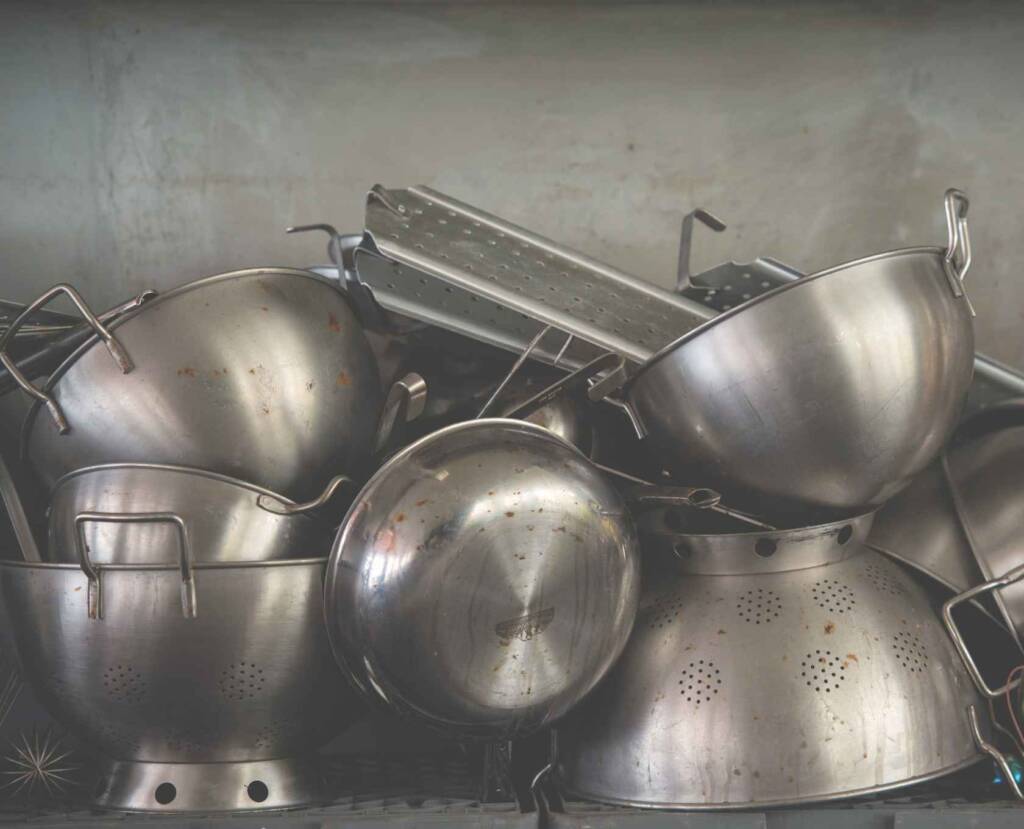
This one is probably the most obvious first step, but we all know how we like to put this off.
The fact is, that we don’t even really realize how much we’re holding on to until it’s all out in the open.
Which brings us to the next step.
Take It All Out
Every single, pot, grill pan and sauce pan.
Now that everything’s out in the open, take a look at what you own.
Separate Pots & Pans that Need Fixing
Right away, you are going to want to separate the cookware that has handles falling off, coating peeling, dings and dents.
You’re going to either repair these, or just discard them.
Give Away the Duplicates
If you have two or three similar sized pans that pretty much serve the same function – ask yourself if you really need that many.
I didn’t even realize this, but at one point I had four pans of the same size and kind in my cabinet.
Trust me, you’re probably better off giving some of the clones away and reducing your own mental clutter.
The form you have selected does not exist.
Stash Away Special-use Cookware
If you have large dutch ovens or pots you use for big parties and dnners, you may be better off storing those away into a pantry or any other storage.
They are just taking up precious space in your kitchen and come in the way of everyday-use cookware.
Take a Gander of What You Have
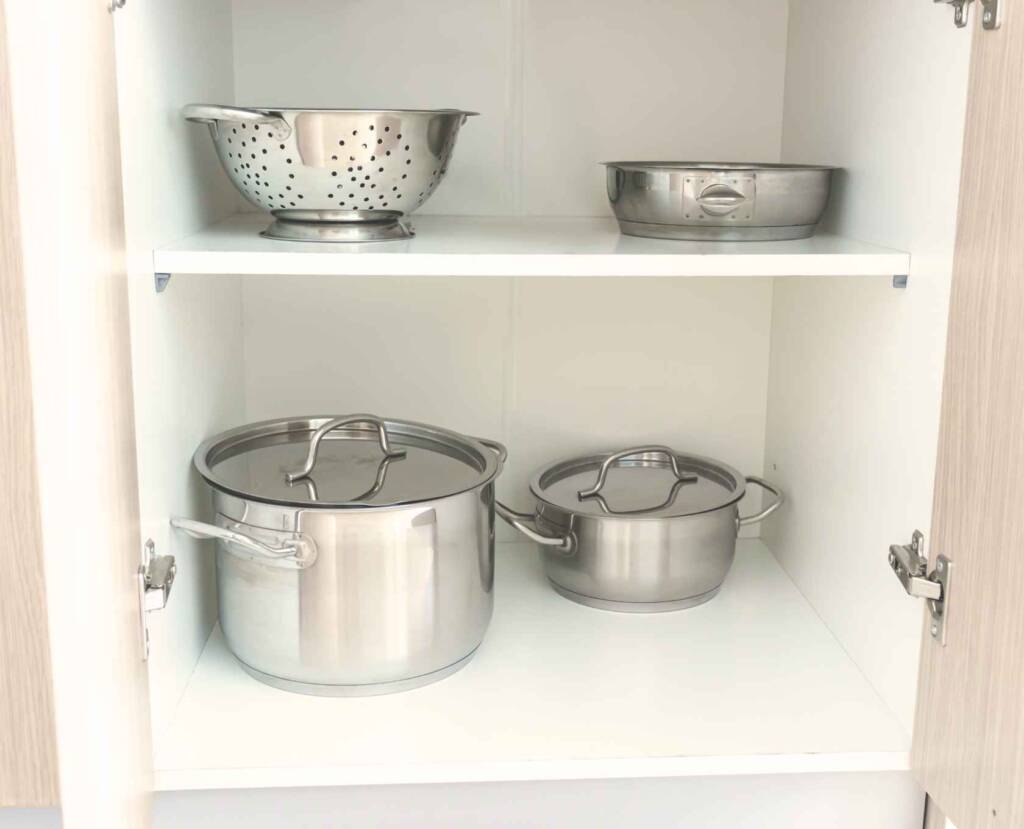
Now that you’ve pared down your pots and pans, it’s time to take a look at your available space and organize your pots & pans.
Identify Your Storage Cabinets
See what kitchen cabinets you can currently spare for your cookware – and see if these are ideal.
If you feel some other cabinet in your kitchen may be better for storing pots and pans – and that cabinet is full with something else, think about switching things up.
As a general rule, pots and pans are best located near your stove top, in base cabinets.
If you want to know the reasoning behind what should go where in your kitchen, I’ve done a detailed article on the best way to arrange your kitchen from scratch.
Measure Up and Take Notes
Take detailed measurements of the cabinets you’ve identified.
Notice if they are more tall, or more deep or on the wider side.
These observations will help you make a decision on your organizational tools and plan.
Organize Pots and Pans According to Your Cabinets
For Wide Cabinets
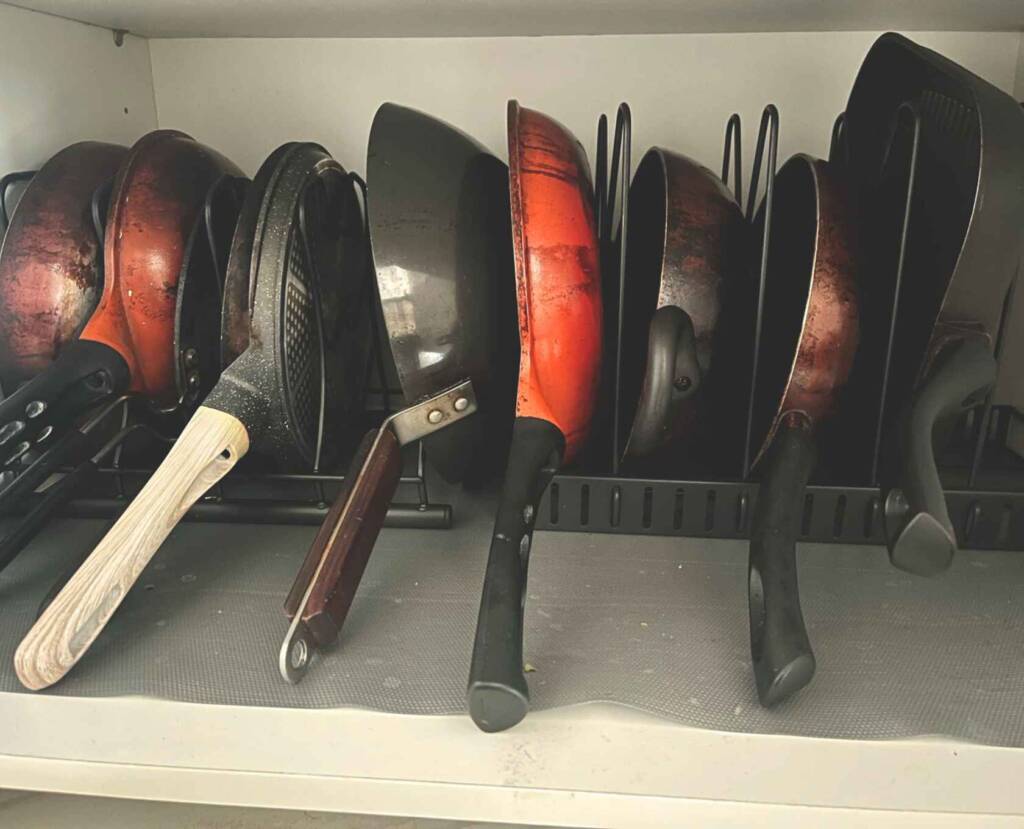
Wider cabinets will be ideal to store your pans, slotted in a single row.
This is how I personally store my pans and it works absolutely beautifully.
All you will need is a couple of slotted pan organizers. Set them next each other to create a long row.
This pan organizer from Amazon that I use is expandable and pretty sturdy. The best bit is that it has adjustable dividers so I could customize the slots according to the thickness of my pots and pans.
Now you can simply pull out a pan when you need one, without disturbing or toppling the others.
Keep in mind that this method will probably not be ideal for deeper pots and you may need to dedicate a different cabinet or space for those.
Or you can divide up this cabinet itself and use a different organizational system for the deeper pots.
For Tall Cabinets
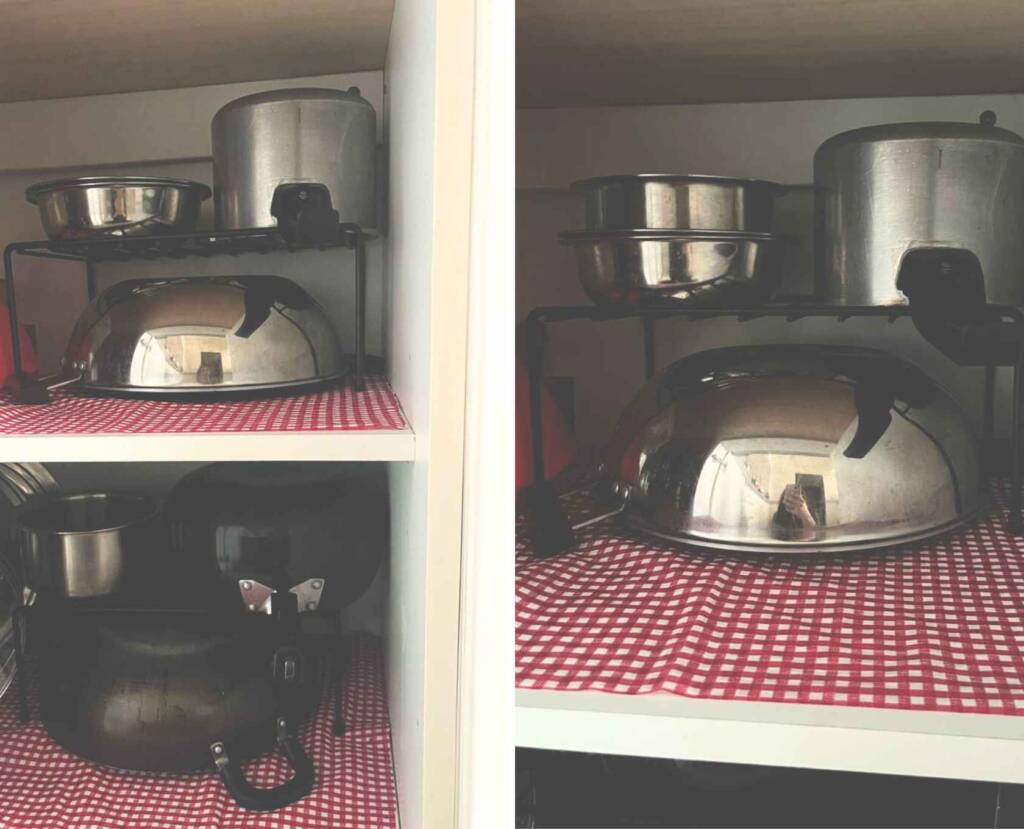
This is where you can use a multi-purpose pots and pans organizer.
This one can even hold deeper pots and stands up so it uses all that extra vertical space.
This tall, sturdy rack from Amazon comes with adjustable dividers so you can house your deep pots and customize it for your needs.
Another simpler and cost-effective way to use the vertical space here, is to add shelf risers. This is how I organize some of my larger woks and pressure cookers.
For Deep Cabinets
Pull out cookware drawers works the best for deeper cabinets, especially if it’s a lower one.
These latest, adhesive pull out kitchen drawers are pretty clever because they require no installation – and can just be stuck onto the base of your cabinets.
Just slidethe drawer out, take the pot you need and slide back in.
No more breaking your backs and legs reaching for the pot you need.
For Deep Drawers
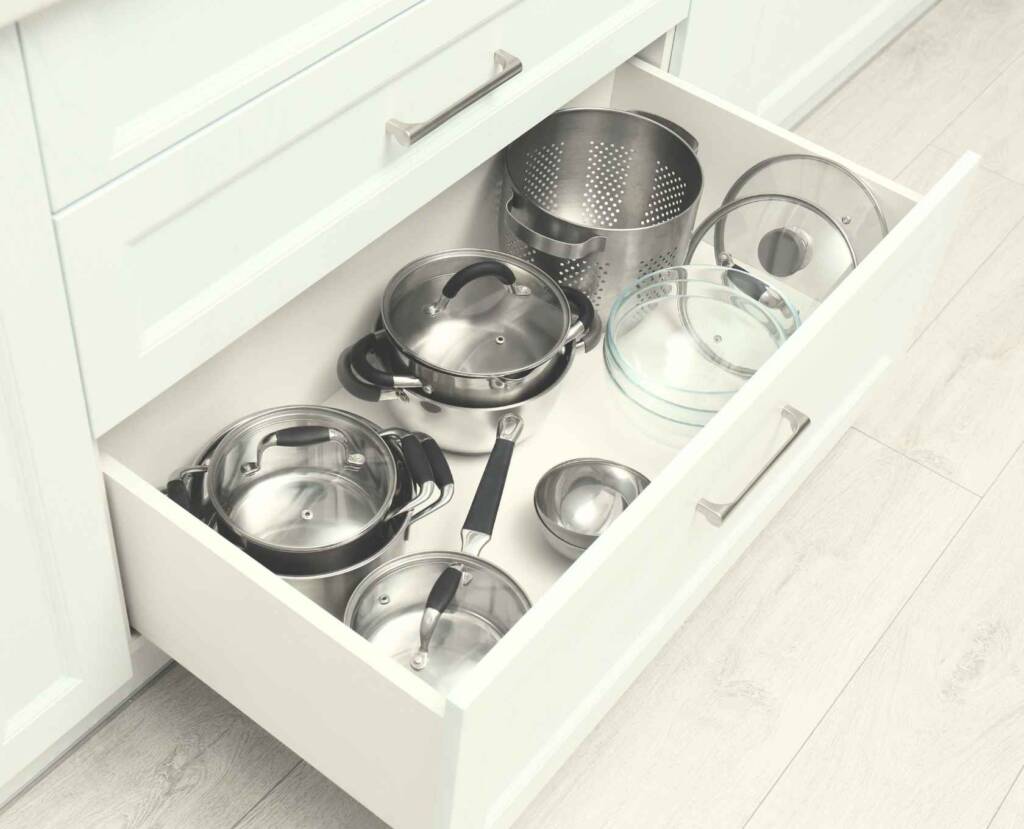
Deep (and broad) drawers are actually great to store your larger, deeper pots and cookware.
You can just set them in the drawer, lids on, keep things fairly simple and organized.
However you may be tempted to stack pots within other pots, to save space.
That’s where things start to get messy.
The best way to store your pots and pans in deep drawers, is actually to avoid stacking anything.
Stacking makes it difficult to find stuff and inconvenient to pull things out.
If you want to keep pots organized inside the drawer and stop them from sliding around on opening and closing, you can consider adding a pegboard to your drawer. It helps keep things put and very visible and accessible. You can customize the pegs to fit various sizes of pots, pans and even lids.
Give Your Lids a Home
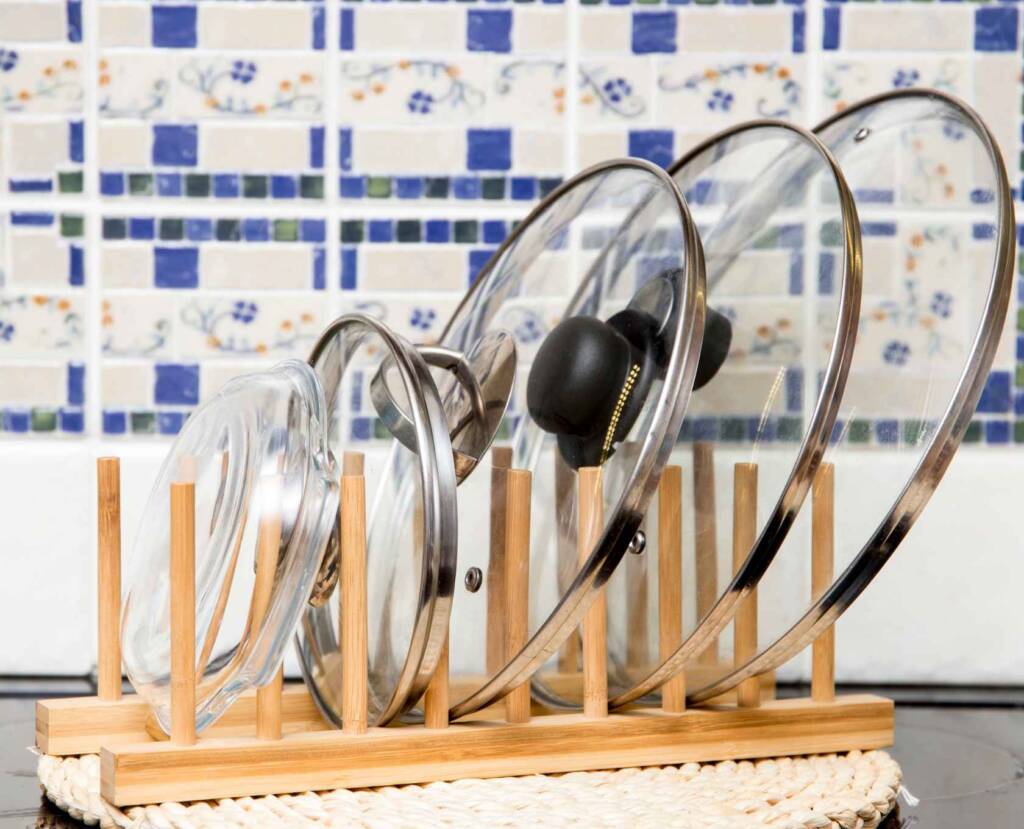
After you’ve organized your pots and pans – in some cases you may be left wondering where exactly to put the lids.
For a long time, I made the mistake of letting my pot lids casually rest against my cabinet wall – but it never works – they always topple and create a mess.
Which is why it is important to think things through and give your lids a proper, designated home – and find the best way to do this.
A slotted lid organizer is super handy to separate and store my pots and pans – and saves you tons of stress in the long run.
Don’t Have Enough Cabinet Space for All Cookware? Hang in there!
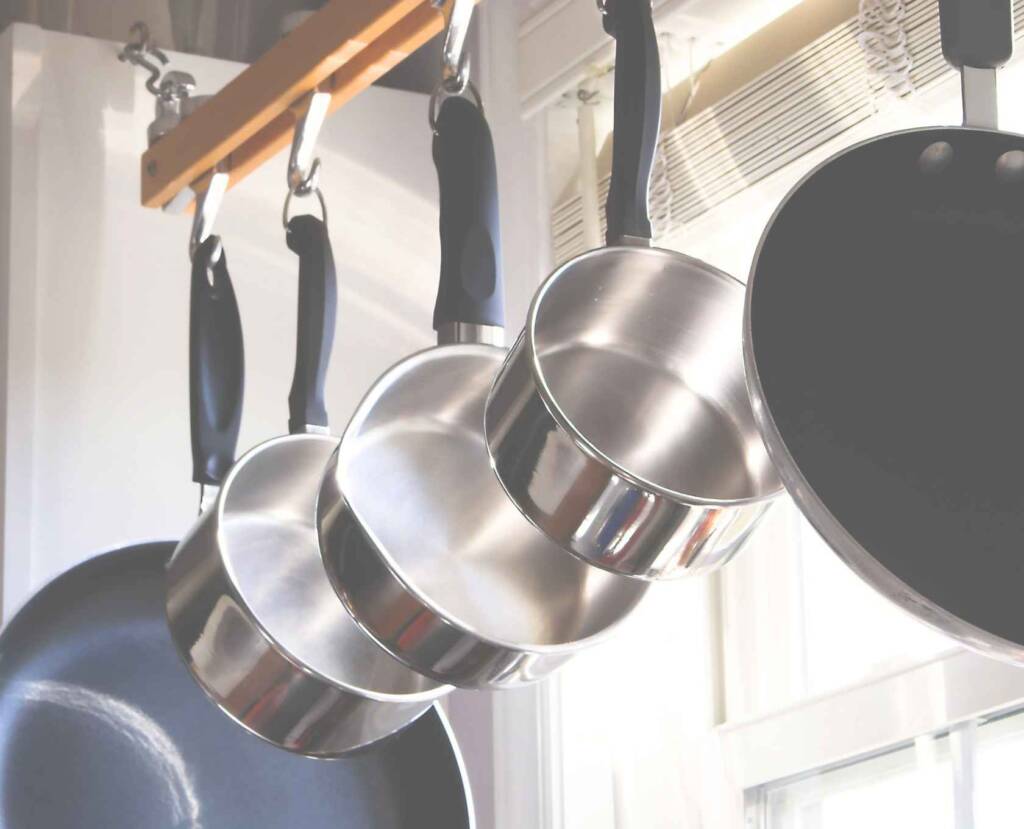
If you don’t have enough space to house all your pots and pans inside cabinets – don’t fret. There are other ways you can store your cookware.
You can hang them on a pegboard, or a ceiling pot rack for a rustic, farmhouse vibe.
Or display your pretty cookware on a floating wall kitchen shelf above the counter.
You can even use your toe kick drawer (if you have one) to stash your shallow pans.
I also quite like All About Tidy’s tip about installing a slim sliding hook system within the cabinet to hang your pans.
So there you have it. A few different ways you can organize your pots & pans inside and outside your kitchen cabinets. If you’re interested in organizing your entire kitchen from scratch, I have a step-by-step guide to help you through the process.




